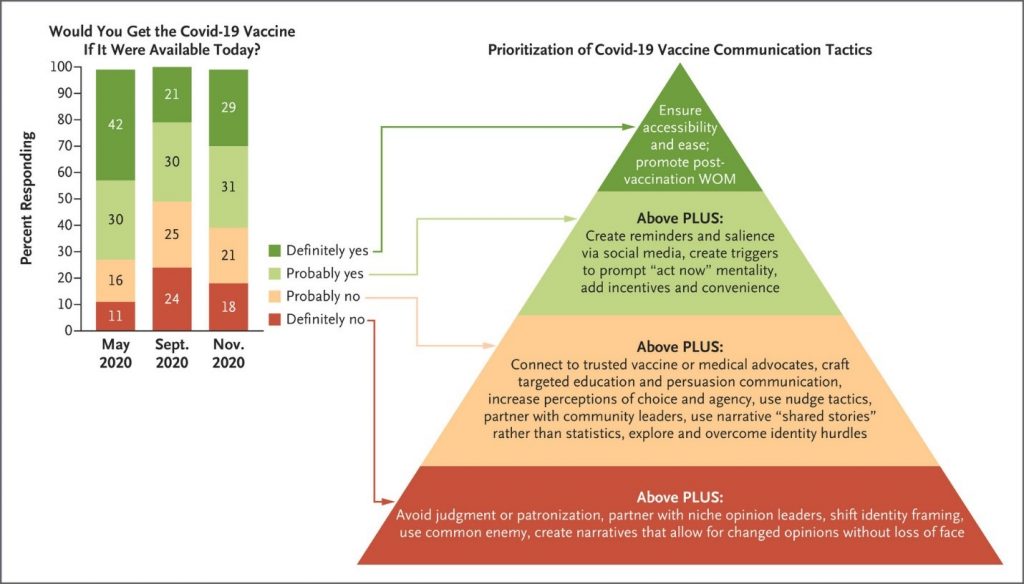By Robert L. Moore, MD, MPH, MBA, Chief Medical Officer
“The tragedy of life is not in failure, but complacency.”
-Benjamin Mays
In the past week, there has been a flurry of new information about different COVID-19 strains. With large-scale community transmission, new strains can spread widely, and the most infectious strains will become more prevalent than less infectious strains over time. New information will continue to become available in the days and weeks ahead. Here is a summary of highlights:
CAL.20C: California has its own highly infectious strain of COVID-19, called CAL.20C which first appeared last summer in Los Angeles, but spread steadily since November, accounting for 30% of cases three weeks ago, and 50% of COVID-19 isolates two weeks ago in Los Angeles. This strain has now been found throughout California, including the Bay Area. Kaiser has identified it at all of their hospitals in Northern California.
This strain was incidentally discovered when California scientists began looking for the highly infectious British strain.
A laboratory director in Napa noted last week isolates of COVID-19 from community testing have much higher load of viruses in the samples than seen before in Napa. This is consistent with the mechanism for higher infectivity of these strains, which is that more virus is shed when people are infectious. Sequencing confirmation is pending, but this suggests that a more infectious strain is rapidly spreading in Northern California in larger numbers. This means that we may be looking at accelerated spread in our region in the month to come.
In the next few weeks, we will learn steadily more about this CAL.20C strain and its role in the notable big surge in COVID-19 cases in California, Arizona, and Nevada, starting in November. Specifically, we need data on mortality rates, effectiveness of vaccines, degree of increased infectiousness, and pattern of spread through the state.
B.1.1.7: On Friday, the UK government announced that early data suggests that the British variant (B.1.1.7), already known to be about 50% more infectious, may have a 30% higher mortality rate than the previous COVID-19 circulating in the UK. In the UK, this means an increase in overall mortality rate from about 1.0% to about 1.3%, still far below the mortality of coronaviruses that caused SARS in 2003 or MERS in 2012.
Early studies have confirmed Moderna vaccine effectiveness against the B.1.1.7 variant.
501Y.V2: This strain, circulating widely in South Africa, has decreased cross-reactivity to convalescent plasma and monoclonal antibodies. Today, Moderna announced that the immune response to their vaccine was somewhat less strong against 501Y.V2 than the original Wuhan strain that their vaccine is based on. We don’t know how much less clinical effectiveness (in terms of actual prevention of infection) that this translates to, but Moderna has developed a new version of their vaccine targeting this strain that it is planning on testing as a booster dose, after the original 2 dose series is completed.
P1: A new strain with over 20 mutations has been identified in Manaus, Brazil has exploded in December, 2020, even in a community which was devastated by a 60-70% infection rate in April, 2020, enough that should have generated herd immunity of the original COVID-19 strain. This raises concerns of widespread re-infection when strains of COVID-19 are sufficiently different, and makes it more likely that vaccines will be less effective against this strain. It will be weeks before we know more details.
Implications of Increased Infectiousness of COVID-19: France and Germany decided that cloth masks are not sufficient to counter spread of more infectious strains. Germany is now requiring N95, KN95, FFP2, or surgical masks, and specifically not cloth masks, for people interacting in public (like grocery stores and public transit). The original push for homemade cloth masks came from a desire to save scarce N95 masks and other masks for doctors, nurses, paramedics, doctor’s offices, etc. It is doubtful that the global supply chain for N95 masks can meet the demand to have the entire population wear them, but KN95 masks are more readily available. Absent these medical grade masks, some are calling for wearing two cloth masks, one on top of the other, to decrease risk of infection.
To increase protection against these more infectious strains, in addition to possible future changes in mask recommendations, the CDC may alter their recommendations around physical distancing. In the meantime, it might be prudent to consider a higher standard (such as 9 feet and 5 minutes instead of 6 feet and 15 minutes), in your health care settings.

